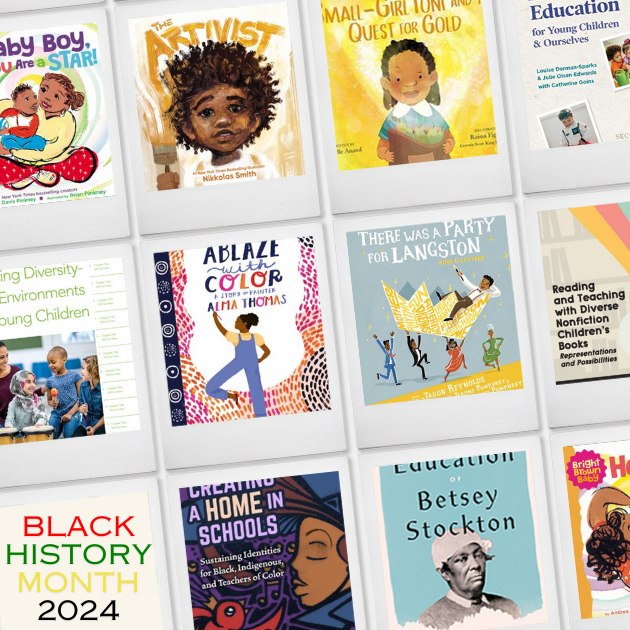Black History Month 2024 is just around the corner, and one way to celebrate is diving into newly published titles and returning to old favorites. Check out the list of new titles below for inspiration for the month and all year.This year’s Black History Month theme, selected annually by the Association for the Study of African American Life and History (ASALH), is African Americans and the arts. Visit the Association’s website to learn more about the theme and Dr. Carter G. Woodson, the Father of Black History, who established ASALH in 1915. Pro-tip: Track the books you & your children are reading. Download the free app The Storygraph, created and owned by Black female tech entrepreneur Nadia Odunayo. All titles are available through the Debra S Fish Early Childhood Resource Library, a branch of the St. Paul Public Library.
Pro-tip: Track the books you & your children are reading. Download the free app The Storygraph, created and owned by Black female tech entrepreneur Nadia Odunayo. All titles are available through the Debra S Fish Early Childhood Resource Library, a branch of the St. Paul Public Library.
Children’s titles
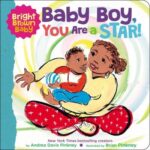
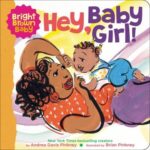
Baby Boy, you are a star! & Hey, Baby Girl! (Age Focus: BabY – 3 years)Two new board books from New York Times bestselling author Andrea Davis Pinkney and tender, charming illustrations from Caldecott Honor and Coretta Scott King Award-winning illustrator Brian Pinkney. [These] inspirational ode[s are] the perfect way to offer confidence at the earliest stage and show all little girls [and boys] that they can change the world!” From the publisher.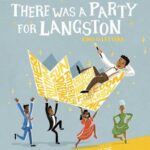
There was a party for Langston (Age Focus: 3 – 8 years)
Recipient of a Kirkus Starred Review“Back in the day, there was a heckuva party, a jam, for a word-making man. The King of Letters. Langston Hughes. His ABCs became drums, bumping jumping thumping like a heart the size of the whole country. They sent some people yelling and others, his word-children, to write their own glory.” From the publisher.Ablaze with color (Age Focus: 4 – 8 years)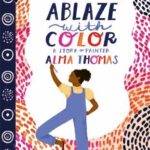 “Celebrate the life-changing power of art in this inspiring and stunningly illustrated picture book biography of American artist Alma Thomas.” From the publisher.The artivist (Age Focus: 4 – 8 years)Recipient of a Kirkus Starred Review“A Bl
“Celebrate the life-changing power of art in this inspiring and stunningly illustrated picture book biography of American artist Alma Thomas.” From the publisher.The artivist (Age Focus: 4 – 8 years)Recipient of a Kirkus Starred Review“A Bl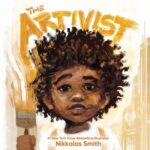 ack child who loves to paint and help the community sees problems in the world that make him want to act. Aware of issues that need to be addressed—an unhoused person and someone being prevented from voting are pictured—he decides to combine his identities as an artist and as an activist, to “take ACTION with my ART,” and be an “ARTIVIST.” His art shows what is broken and what might heal it. When his painting on a city wall catches the attention of news outlets, its impact multiplies. In the second half of the story, the text describes what an artivist does while the visuals show various activist-related art, from murals to protest signs, that inspire empathy and spark change. The intimate, first-person narration draws readers right into the story, and the protagonist’s heartfelt concern for justice keeps readers engaged through the hopeful ending message. Smith’s vibrant art, full of expressive strokes and effective use of color, light, and dark, complements the text beautifully; while his words are broad and general, the images depict specific issues facing contemporary society.” From Kirkus Reviews.
ack child who loves to paint and help the community sees problems in the world that make him want to act. Aware of issues that need to be addressed—an unhoused person and someone being prevented from voting are pictured—he decides to combine his identities as an artist and as an activist, to “take ACTION with my ART,” and be an “ARTIVIST.” His art shows what is broken and what might heal it. When his painting on a city wall catches the attention of news outlets, its impact multiplies. In the second half of the story, the text describes what an artivist does while the visuals show various activist-related art, from murals to protest signs, that inspire empathy and spark change. The intimate, first-person narration draws readers right into the story, and the protagonist’s heartfelt concern for justice keeps readers engaged through the hopeful ending message. Smith’s vibrant art, full of expressive strokes and effective use of color, light, and dark, complements the text beautifully; while his words are broad and general, the images depict specific issues facing contemporary society.” From Kirkus Reviews.
Small-Girl Toni and the quest for gold (Age Focus: 4 – 8 years)
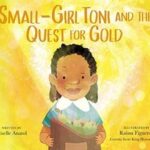 Recipient of a Kirkus Starred Review“A charming tale in tribute to the life and imagination of storytelling powerhouse Toni Morrison.Small-Girl Toni is certain that stories—her stories—can change the world. Many adults in her predominantly Black community disagree, but Small-Girl Toni does what real-life Morrison will become known for when faced with doubt from critics—she tells stories anyway. Like stories about treasure in her town to draw her siblings into a hunt. The foursome pick blackberries as they search for doubloons in lonely Ms. Solomon’s backyard; they offer to walk Widow Sersee’s dogs in the hope the canines will sniff out long-buried gold; they peer enthusiastically through the candy shop window at golden treats, only to be rebuffed by the white store owner. All the while Small-Girl Toni spins her tales, and as the siblings arrive home glumly with no treasure, she helps them see the gold they found along the way—’It’s all in how you tell the story.’” From Kirkus Reviews.Adult’s titles
Recipient of a Kirkus Starred Review“A charming tale in tribute to the life and imagination of storytelling powerhouse Toni Morrison.Small-Girl Toni is certain that stories—her stories—can change the world. Many adults in her predominantly Black community disagree, but Small-Girl Toni does what real-life Morrison will become known for when faced with doubt from critics—she tells stories anyway. Like stories about treasure in her town to draw her siblings into a hunt. The foursome pick blackberries as they search for doubloons in lonely Ms. Solomon’s backyard; they offer to walk Widow Sersee’s dogs in the hope the canines will sniff out long-buried gold; they peer enthusiastically through the candy shop window at golden treats, only to be rebuffed by the white store owner. All the while Small-Girl Toni spins her tales, and as the siblings arrive home glumly with no treasure, she helps them see the gold they found along the way—’It’s all in how you tell the story.’” From Kirkus Reviews.Adult’s titles CreAting diversity-rich environments for young children“Early childhood educators have the power to help all children learn to respect themselves and others. Creating Diversity-Rich Environments for Young Children is an easy-to-use guide that shows how early childhood professionals can create a positive and inclusive environment for children of all cultures.The newest addition in the Redleaf Press Quick Guide series includes elements of the National Association for the Education of Young Children’s (NAEYC) developmentally appropriate practice and ethical standards, early childhood progress indicators, and best practices in adult learning.” From the publisher.
CreAting diversity-rich environments for young children“Early childhood educators have the power to help all children learn to respect themselves and others. Creating Diversity-Rich Environments for Young Children is an easy-to-use guide that shows how early childhood professionals can create a positive and inclusive environment for children of all cultures.The newest addition in the Redleaf Press Quick Guide series includes elements of the National Association for the Education of Young Children’s (NAEYC) developmentally appropriate practice and ethical standards, early childhood progress indicators, and best practices in adult learning.” From the publisher.
Anti-bias education for young children & ourselves
“Becom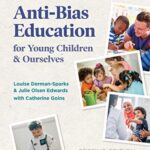 ing a skilled anti-bias teacher is a journey. With this volume’s practical guidance, you’ll grow in your ability to identify, confront, and eliminate barriers of prejudice, misinformation, and bias about specific aspects of personal and social identity. Most important, you’ll find tips for helping staff and children learn to respect each other, themselves, and all people. Over the last three decades, educators across the nation and around the world have gained a wealth of knowledge and experience in anti-bias work. The result is a richer and more nuanced articulation of what is important in anti-bias education. Revolving around four core goals―identity, diversity, justice, and activism―individual chapters focus on culture and language, racial identity, family structures, gender identity, economic class, different abilities, and more.” From the publisher.Creating a Home in Schools: Sustaining identities for Black, Indigenous, and teachers of Color“The authors of this book provide caring advice to Black, Indigenous, and Teachers of Color (BITOC) to h
ing a skilled anti-bias teacher is a journey. With this volume’s practical guidance, you’ll grow in your ability to identify, confront, and eliminate barriers of prejudice, misinformation, and bias about specific aspects of personal and social identity. Most important, you’ll find tips for helping staff and children learn to respect each other, themselves, and all people. Over the last three decades, educators across the nation and around the world have gained a wealth of knowledge and experience in anti-bias work. The result is a richer and more nuanced articulation of what is important in anti-bias education. Revolving around four core goals―identity, diversity, justice, and activism―individual chapters focus on culture and language, racial identity, family structures, gender identity, economic class, different abilities, and more.” From the publisher.Creating a Home in Schools: Sustaining identities for Black, Indigenous, and teachers of Color“The authors of this book provide caring advice to Black, Indigenous, and Teachers of Color (BITOC) to h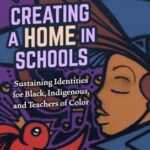 elp sustain them into and through the teaching profession. Through an examination of BITOC in the education workforce, the assets that these educators bring to the teaching profession are identified, as are some of the most critical challenges they face in today’s schools. The book illuminates the importance of cultivating and supporting social cultural identities as resources that will serve prospective teachers and their increasingly diverse students. Rooted in an identity sustaining framework, the authors strongly encourage BITOC to bring their full cultural, social, and linguistic assets into the classroom while simultaneously encouraging their students to do the same. Creating a Home in Schools will help readers successfully negotiate and navigate the teaching profession, from pathway programs, to teacher education, and into the classroom.” From the publisher.Reading and teaching with diverse nonfiction children’s books: Representations and possibilities“This edited volume brings together ongoing professional conversations about diverse children’s books and the role and function of nonfiction and informational text in K–8 classrooms. The authors in this book
elp sustain them into and through the teaching profession. Through an examination of BITOC in the education workforce, the assets that these educators bring to the teaching profession are identified, as are some of the most critical challenges they face in today’s schools. The book illuminates the importance of cultivating and supporting social cultural identities as resources that will serve prospective teachers and their increasingly diverse students. Rooted in an identity sustaining framework, the authors strongly encourage BITOC to bring their full cultural, social, and linguistic assets into the classroom while simultaneously encouraging their students to do the same. Creating a Home in Schools will help readers successfully negotiate and navigate the teaching profession, from pathway programs, to teacher education, and into the classroom.” From the publisher.Reading and teaching with diverse nonfiction children’s books: Representations and possibilities“This edited volume brings together ongoing professional conversations about diverse children’s books and the role and function of nonfiction and informational text in K–8 classrooms. The authors in this book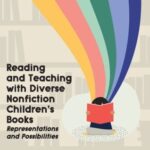 respond to the urgent need to advance scholarship on children’s nonfiction literature that provides representations of populations traditionally marginalized in media and culture. Grounded in children’s literature research and criticism, the authors in this volume take as a given the reality that issues of representation matter, and that, with the existence of exemplary children’s nonfiction books, all educators, researchers, and scholars have a responsibility to move beyond texts with limited or problematic depictions and utilize quality books that accurately and authentically represent the world in which we live.” From the publisher.
respond to the urgent need to advance scholarship on children’s nonfiction literature that provides representations of populations traditionally marginalized in media and culture. Grounded in children’s literature research and criticism, the authors in this volume take as a given the reality that issues of representation matter, and that, with the existence of exemplary children’s nonfiction books, all educators, researchers, and scholars have a responsibility to move beyond texts with limited or problematic depictions and utilize quality books that accurately and authentically represent the world in which we live.” From the publisher.
The education of Betsey Stockton: an odyssey of slavery and freedom
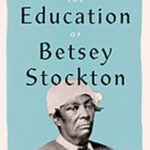 “Betsey Stockton’s odyssey took her from Princeton to the faraway Hawaiian Islands, where she began a missionary school for commoners. After venturing elsewhere in the United States and Canada, she returned to New Jersey where, despite obstacles posed by a racist society, she continued to educate people of color. In Nobles’ skillful telling, the story of Stockton’s life (ca. 1798 through the Civil War) shows how history is made at the local level by individuals who dedicate themselves to a cause. Stockton’s accomplishments as churchwoman and educator never earned her national fame, but her work was as crucial as that of Frederick Douglass or Harriet Tubman to the struggle for freedom and civil rights.” From Marie Jenkins Schwartz, author of Ties That Bound: Founding First Ladies and Slaves“In this first book-length telling of Betsey Stockton’s story, Gregory Nobles illuminates both a woman and her world, following her around the globe, and showing how a determined individual could challenge her society’s racial obstacles from the ground up. It’s at once a revealing lesson on the struggles of Stockton’s times and a fresh inspiration for our own.” From the publisher.Other resources
“Betsey Stockton’s odyssey took her from Princeton to the faraway Hawaiian Islands, where she began a missionary school for commoners. After venturing elsewhere in the United States and Canada, she returned to New Jersey where, despite obstacles posed by a racist society, she continued to educate people of color. In Nobles’ skillful telling, the story of Stockton’s life (ca. 1798 through the Civil War) shows how history is made at the local level by individuals who dedicate themselves to a cause. Stockton’s accomplishments as churchwoman and educator never earned her national fame, but her work was as crucial as that of Frederick Douglass or Harriet Tubman to the struggle for freedom and civil rights.” From Marie Jenkins Schwartz, author of Ties That Bound: Founding First Ladies and Slaves“In this first book-length telling of Betsey Stockton’s story, Gregory Nobles illuminates both a woman and her world, following her around the globe, and showing how a determined individual could challenge her society’s racial obstacles from the ground up. It’s at once a revealing lesson on the struggles of Stockton’s times and a fresh inspiration for our own.” From the publisher.Other resources
- Black History Month Resource Guide for Educators and Families, by The Center for Racial Justice in Education:A comprehensive collection of readings, discussion topics, and other curriculum tools to incorporate Black history into the classroom all year. These resources are intended for K-12 students and are also a great place for educators within early childhood to build their own knowledge and support their teaching.
- 4 Strategies for Teaching Black History in Early Learning Programs by Child Care Aware: Thoughts and strategies by a veteran of the field on incorporating diversity, equity, and inclusion into early childhood programs during Black History Month and all year long.
- Celebrating Black Leaders by PBS KIDS for Parents: Activities, discussion starters, books lists, and more to start learning about Black history with preschool and early elementary children
- Celebrating Black History Month: DVD available from the Saint Paul Public Library, intended for ages 8 – 12 years. “Learn all about why and how we celebrate Black History Month. Who was Carter G. Woodson? How was his research and documentation of Black history beyond their enslavement in the United States important to Black people then and now? Why did history books, newspapers, newsreels and movies historically record and present only negative stereotypes of Blacks, if any representation at all? How did celebrating Black history inspire recent great Black achievers like Barack Obama, Thurgood Marshall, and Ketanji Brown-Jackson? The answers to all these questions and more are covered in depth with detailed graphics, diagrams and exciting video that reinforce important concepts.”
- Black History Month by Reading Rockets: “Through children’s books, interviews with Black children’s authors and illustrators, classroom activities, online history resources, and powerful documentaries, we celebrate and learn about the lives and contributions of African Americans.”
- 30 Fun and Educational Black History Activities for Toddlers by Teaching Expertise
- Black History and Early Childhood Education: Seven Resources to Explore for Black History Month by NAEYC
Contact Jennie with any questions: librarian@thinksmall.org or (651) 641-3544Available through MNLINK (www.mnlink.org) or St. Paul Public Library (www.sppl.org)All you need is a library card. Resources can be delivered and returned to any Minnesota public libraryBy Jennie Walker Knoot
